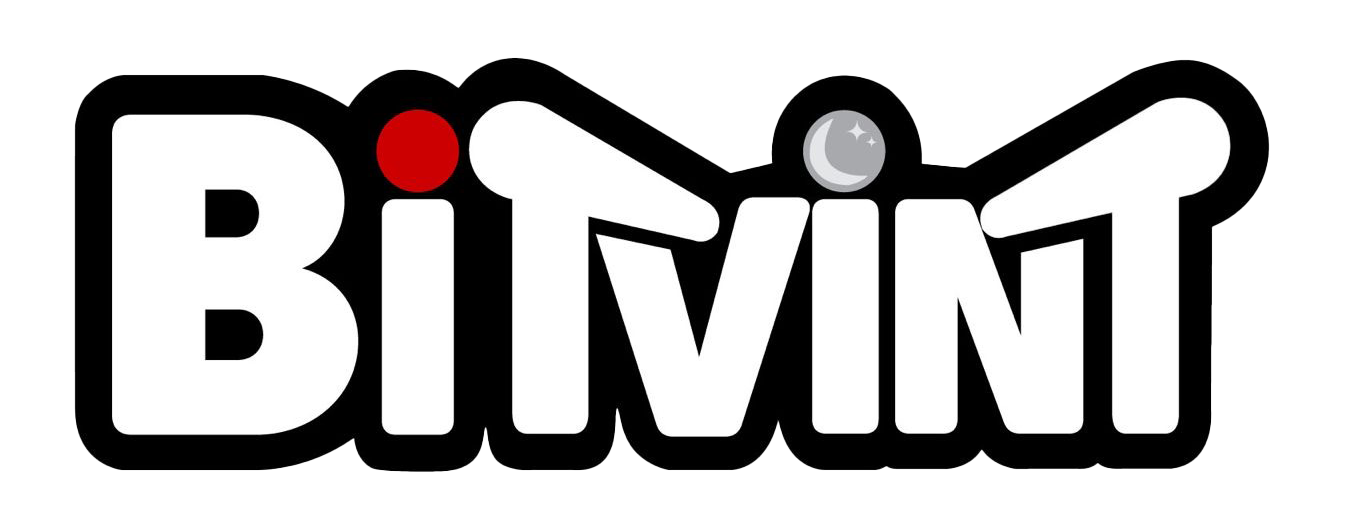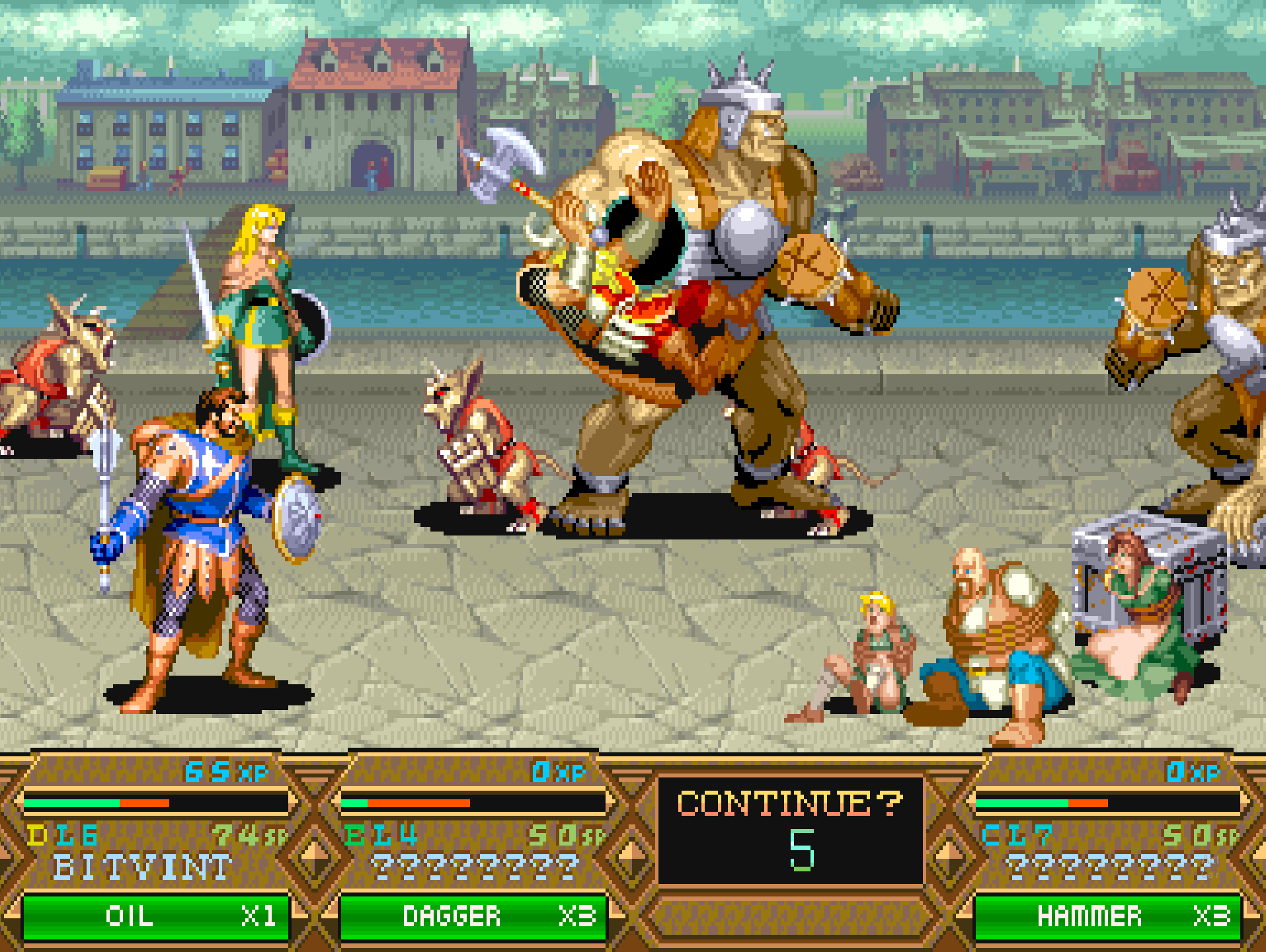Introduction
Released by Capcom in 1993, Dungeons & Dragons: Tower of Doom is a side-scrolling beat-’em-up arcade game that blends real-time combat with deep role-playing elements. Officially licensed by TSR and based on the D&D Mystara setting, it marked a major evolution of the genre. With branching paths, loot, spellcasting, and class-based strategy, Tower of Doom redefined what an arcade brawler could be.
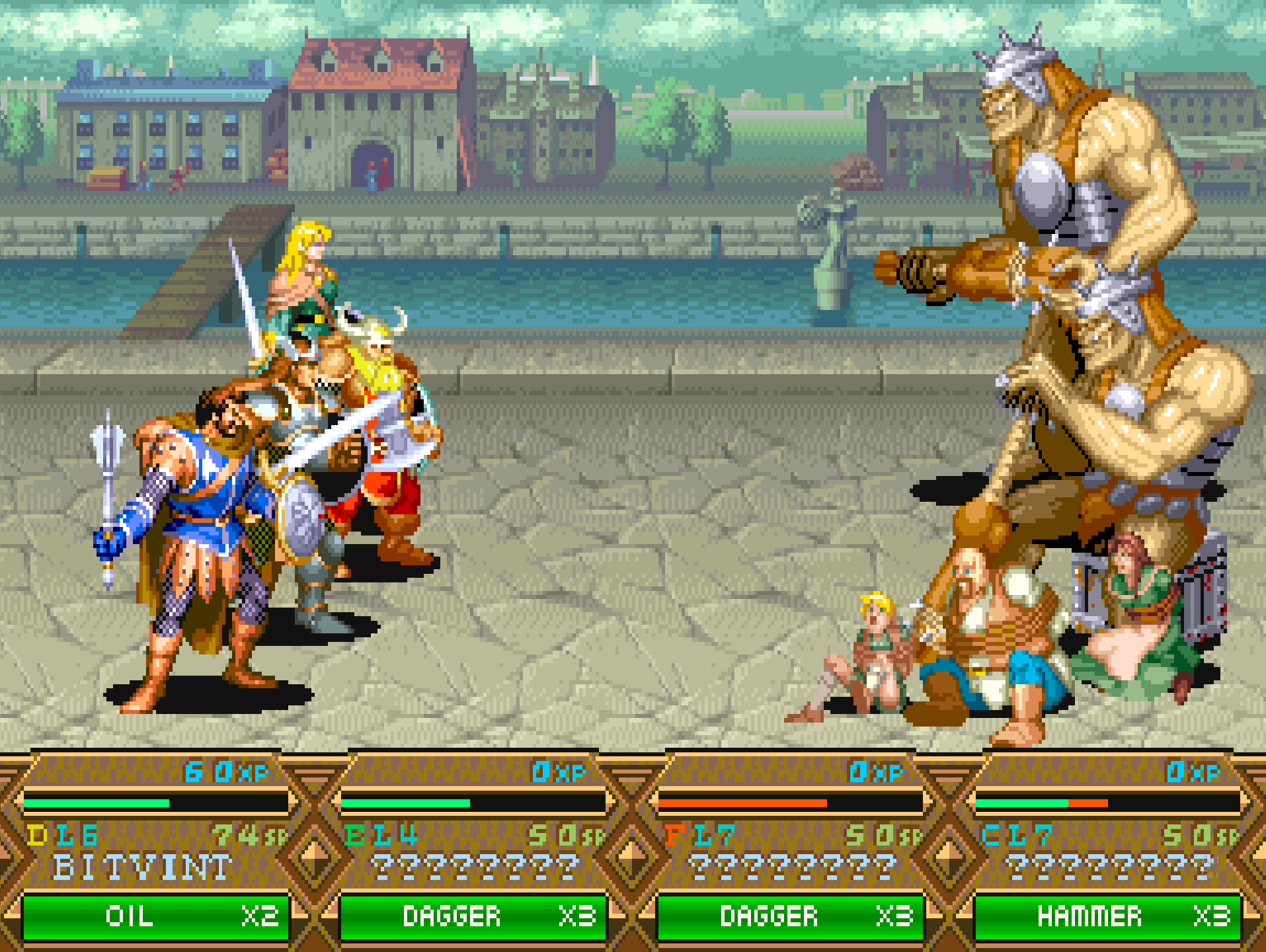
Development and History
- Developer: Capcom
- Publisher: Capcom
- Release Date: 1993
Built on the Capcom CPS-2 arcade board, Tower of Doom was developed with input from TSR to ensure authenticity with the Dungeons & Dragons brand. The game was directed by Noritaka Funamizu and designed by a team known for their work on Capcom’s earlier fantasy beat-’em-ups.
With a darker tone and tactical complexity, Tower of Doom featured detailed sprite work and some of the deepest gameplay in any arcade action title at the time.

Gameplay Video
Gameplay and Mechanics
Core Gameplay
Players choose from four classic D&D classes—Fighter, Cleric, Elf, and Dwarf—and battle through a branching campaign against the evil that plagues the Republic of Darokin.
- Class-Based Combat: Each character has unique weapons, spells, and combat stats.
- Real-Time Spellcasting: Players use item wheels to access magic and inventory in mid-combat.
- Branching Paths: After certain stages, players vote on which direction the quest should take.
- Loot and Gold: Items and treasure can be picked up to buy equipment or heal at shops.
Challenges
- Enemy Variety: Includes goblins, trolls, dragons, and powerful D&D boss monsters.
- Tactical Play: Blocking, dodging, positioning, and resource use are all critical.
- Magic and Items: Scrolls, potions, and enchanted weapons must be managed carefully.
- Multiplayer Synergy: Co-op strategy is essential—e.g., Clerics turning undead, Fighters tanking.
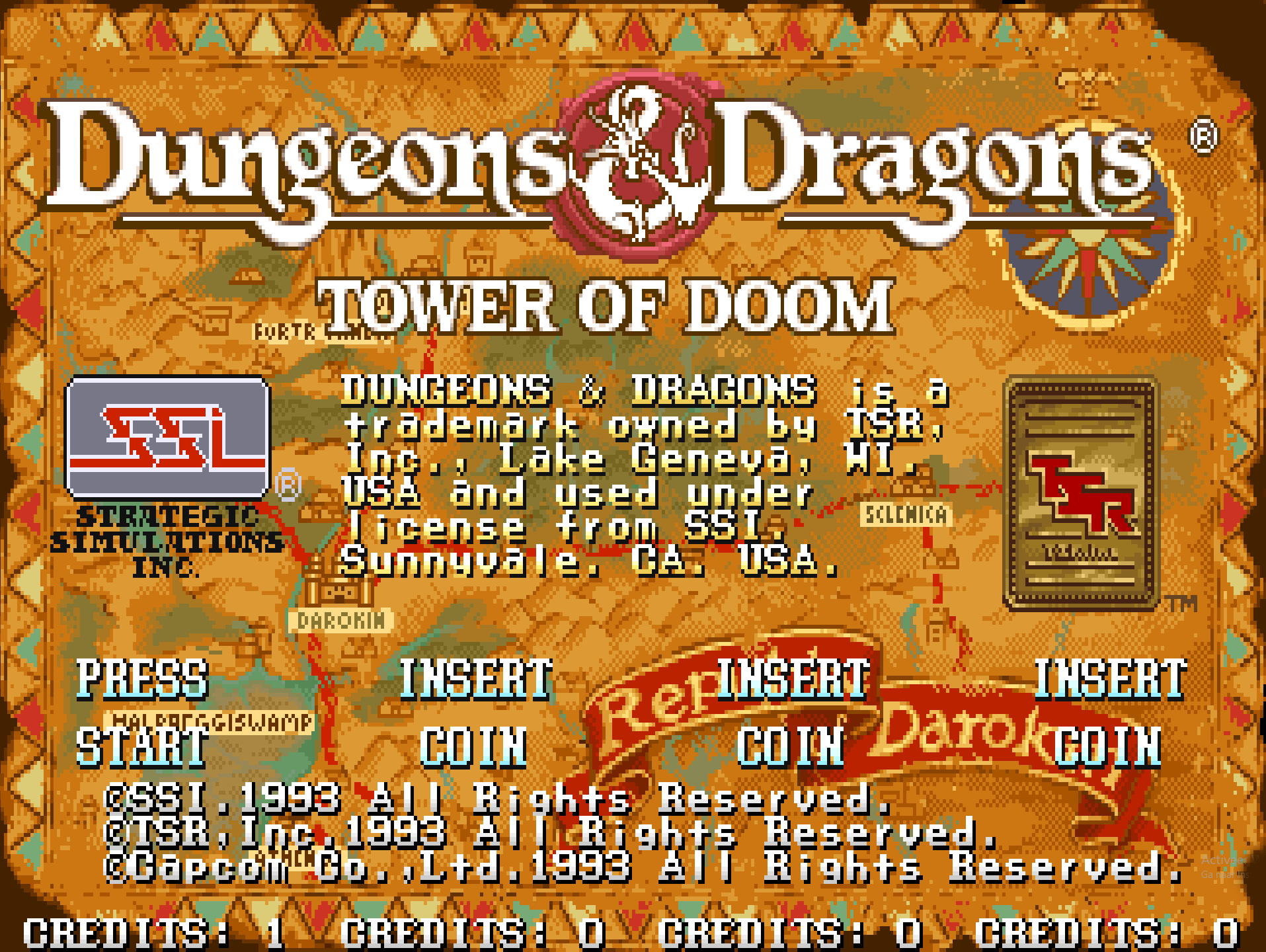
Cultural Impact and Legacy
- Genre Redefiner: Merged arcade beat-’em-up gameplay with tabletop RPG depth.
- Authentic D&D Experience: Closely aligned with Mystara campaign setting.
- Sequel: Followed by Dungeons & Dragons: Shadow over Mystara in 1996.
- Modern Re-Releases: Included in Dungeons & Dragons: Chronicles of Mystara for consoles and PC.

Fun Facts
- Cleric’s Turn Undead: One of the few arcade games to implement this iconic D&D mechanic.
- Voice Samples: Included early voiceovers for item use and spellcasting.
- Secret Bosses: Some optional paths lead to hidden encounters.
- Multilingual Versions: Released in Japanese and English with different item balance.
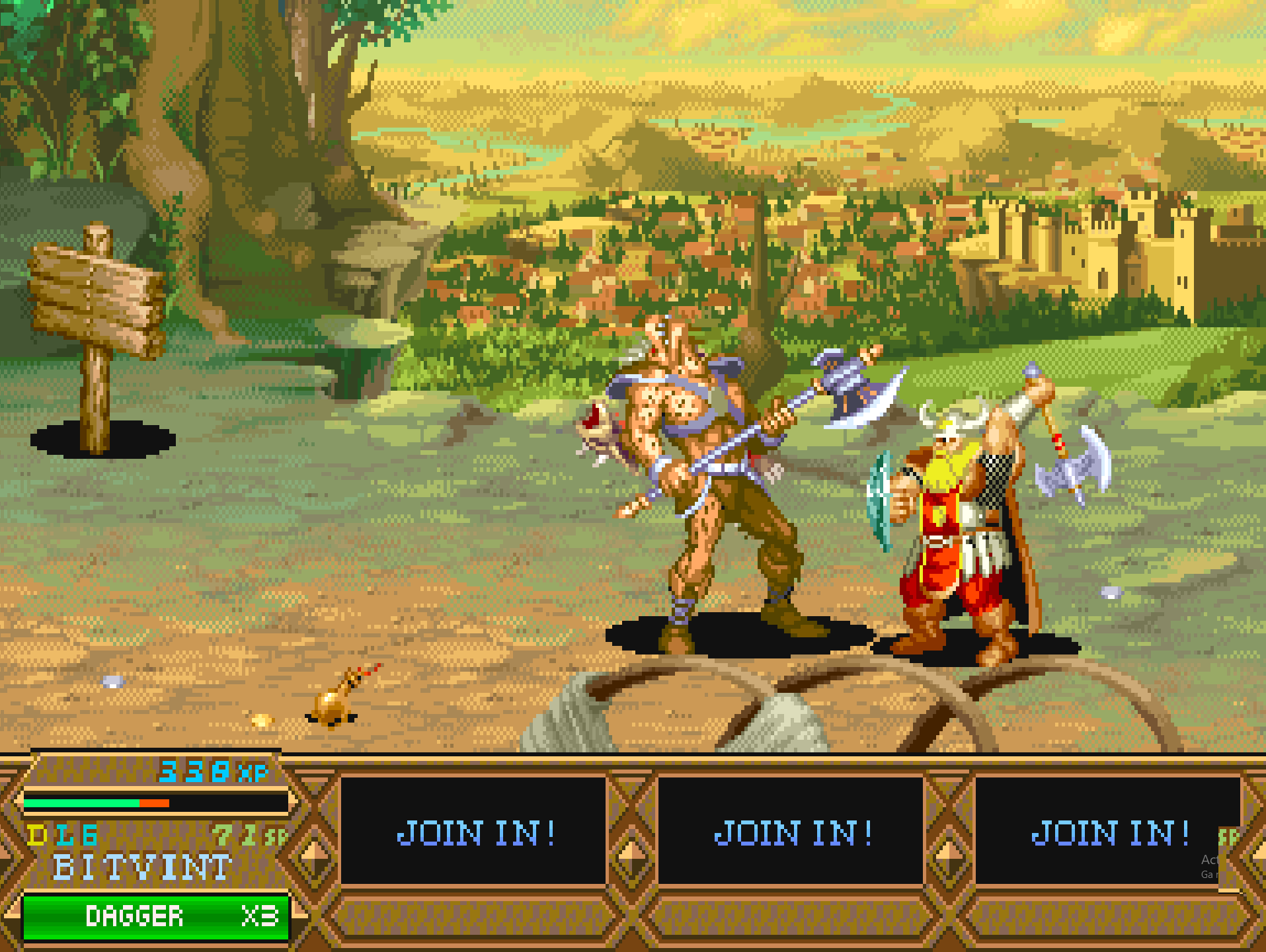
Conclusion
Dungeons & Dragons: Tower of Doom was a bold experiment that paid off. Its fusion of brawler action and RPG depth created one of the most engaging arcade games of its time. For fans of fantasy, co-op strategy, and high replay value, it remains a gold standard in the genre.
